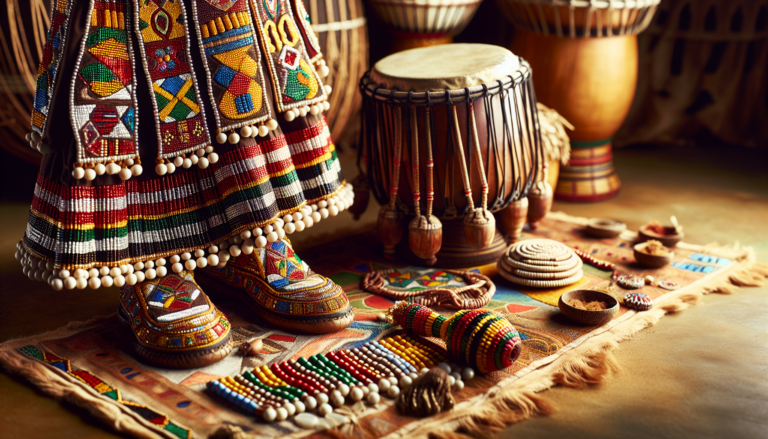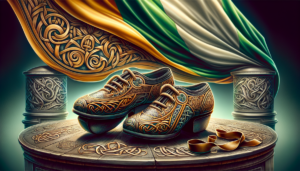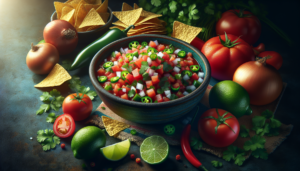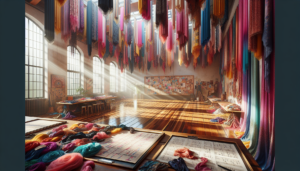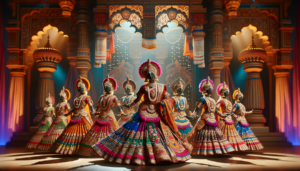African dance is a vibrant and culturally significant art form that has captivated audiences worldwide. With its rhythmic movements, expressive gestures, and infectious energy, African dance tells stories, celebrates life, and connects communities. From traditional tribal dances to contemporary afro beat styles, the world of African dance is diverse and ever-evolving.
Introduction to African Dance
African dance is deeply rooted in the continent’s rich cultural heritage. Each region and ethnic group has its own unique dance styles, often tied to specific rituals, ceremonies, and social occasions. These dances serve as a means of communication, expression, and cultural preservation, passed down through generations.
The beauty of African dance lies in its ability to engage the entire body. Dancers move to the rhythms of drums, percussion, and vocal accompaniment, creating a mesmerizing visual spectacle. The dances often incorporate intricate footwork, undulating torso movements, and expressive arm gestures, all seamlessly synchronized with the music.
The Cultural Significance of African Dance
In African cultures, dance is more than just entertainment; it is a fundamental aspect of life. Dance is used to mark important milestones, such as births, weddings, and harvests. It is also a means of storytelling, with dances depicting historical events, legends, and moral lessons.
Moreover, African dance plays a vital role in community bonding and social cohesion. Dances are often performed in groups, fostering a sense of unity and shared identity. Participation in dance is open to all, regardless of age or social status, creating an inclusive and egalitarian environment.
Evolution of African Dance
While traditional African dances have been passed down for centuries, the art form has also evolved over time. As Africa interacted with other cultures through trade, colonization, and globalization, new dance styles emerged, blending elements from different regions and influences.
In recent decades, African dance has gained global popularity, particularly through the rise of afro beat music and dance. This contemporary genre, popularized by artists like Fela Kuti and Wizkid, combines traditional African rhythms with elements of jazz, funk, and hip-hop. Afro beat has inspired a new generation of dancers, who have developed innovative moves and styles that showcase the vitality and creativity of African dance.
Popular Afro Dance Moves
African dance is known for its energetic and expressive moves that engage the entire body. From the fast-paced footwork to the undulating torso movements, African dance moves are designed to celebrate life, express emotions, and connect with the rhythm of the music. Here are some popular afro dance moves that have taken the world by storm:
Legwork Dance Move
The legwork dance move is a staple in many African dance styles. It involves intricate footwork patterns, often performed at a fast pace. Dancers kick, step, and shuffle their feet in rhythm with the music, creating a visually stunning display of coordination and agility.
To master the legwork dance move, dancers need to develop strong lower body control and stamina. The key is to keep the feet close to the ground, maintaining a low center of gravity while executing the quick and precise steps. Dancers often add their own flair and variations to the legwork, incorporating kicks, spins, and directional changes.
Moonwalk Dance Move
The moonwalk, although popularized by Michael Jackson, has its roots in African dance. This move creates the illusion of the dancer gliding backwards while actually moving forwards. It requires a smooth and fluid motion, achieved by sliding the feet across the floor in a specific pattern.
To perform the moonwalk, dancers start by placing one foot forward and shifting their weight onto that foot. They then slide the back foot forward, past the front foot, while simultaneously sliding the front foot back. This creates the illusion of moving backwards. Mastering the moonwalk takes practice and patience, as it requires precise timing and weight transfer.
Network Dance Move
The network dance move, also known as the chicken dance, is a playful and energetic move that involves flapping the arms and kicking the legs. It is often performed to upbeat afro beat music and is a favorite among dancers of all ages.
To do the network dance move, dancers bend their arms at the elbows, holding them close to their body. They then flap their arms up and down, mimicking the motion of a chicken’s wings. Simultaneously, they kick their legs out to the side, alternating between the left and right leg. The move is performed in rhythm with the music, creating a lively and entertaining display.
Pouncing Cat Dance Move
The pouncing cat dance move is a dynamic and expressive move that showcases the dancer’s agility and grace. It involves quick, cat-like movements, as if pouncing on prey. Dancers crouch low to the ground, with their hands in front of them, and then spring up and forward, extending their legs and arms.
This move requires explosive power and coordination. Dancers need to engage their core muscles to maintain balance and control during the pouncing motion. The pouncing cat dance move is often incorporated into choreography to add an element of surprise and excitement.
Gbeku Dance Move
The gbeku dance move, originating from Nigeria, is a high-energy move that involves jumping and kicking. Dancers leap into the air, tucking their knees towards their chest, and then extend their legs out in front of them before landing.
Performing the gbeku dance move requires strong leg muscles and cardiovascular endurance. Dancers need to generate power from their legs to achieve height in their jumps, while also maintaining control and balance throughout the movement. The gbeku is often performed in succession, creating a visually impressive display of energy and athleticism.
Learning African Dance
Learning African dance is an exciting and rewarding experience. Whether you are a beginner or have some dance background, there are various resources available to help you get started. From online tutorials to in-person classes, you can find a learning method that suits your preferences and skill level.
Top YouTube Channels for African Dance Tutorials
YouTube is a fantastic resource for learning African dance from the comfort of your own home. Many talented dancers and instructors have created online tutorials that break down popular dance moves step by step. Two highly recommended YouTube channels for African dance tutorials are Chop Daily and Kanazi Talent Kids.
Chop Daily is a channel dedicated to showcasing African dance moves and tutorials. Their videos feature skilled dancers demonstrating various moves, accompanied by clear explanations and breakdowns. Chop Daily covers a wide range of African dance styles, from traditional to contemporary, making it a great starting point for beginners.
Kanazi Talent Kids is a channel featuring a group of talented young dancers from East Africa. Their videos showcase their incredible energy and passion for dance, as they perform choreography to popular afro beat songs. While not strictly tutorial-based, watching Kanazi Talent Kids’ videos can provide inspiration and ideas for your own dance practice.
Engaging Dance Lessons
If you prefer a more structured learning approach, consider joining dance lessons or workshops. Many dance studios and community centers offer African dance classes for various skill levels. These lessons provide a supportive environment where you can learn from experienced instructors and connect with fellow dance enthusiasts.
One highly recommended series of dance lessons is the “Five(ish) Minute Dance Lesson” by the Kennedy Center Education Digital Learning. These concise video lessons focus on specific African dance techniques and concepts, making them perfect for busy learners. The engaging instructors break down the movements in an easy-to-follow manner, encouraging viewers to practice along at their own pace.
| Lesson Title | Duration | Key Concepts |
|---|---|---|
| African Dance: Lesson 1: Dinhe | 5:37 | Basic step, posture, arm movements |
| African Dance: Lesson 2: Djole | 6:23 | Footwork, rhythm, coordination |
| African Dance: Lesson 3: Dancing on the Clock | 6:24 | Directional movement, spatial awareness |
Remember, learning African dance is a journey. Be patient with yourself, practice regularly, and most importantly, have fun! Embrace the joy and energy of the music, and let your body express itself freely.
The Joy and Benefits of African Dance
African dance is not only a form of artistic expression but also a means of promoting physical and mental well-being. Engaging in African dance brings joy, builds strength, and fosters a sense of community. Let’s explore the various benefits of incorporating African dance into your life.
Physical and Mental Health Benefits
Dancing is an excellent form of exercise that engages both the body and mind. African dance, with its dynamic movements and infectious rhythms, provides a full-body workout that can improve cardiovascular health, increase flexibility, and strengthen muscles. The fast-paced footwork and energetic jumps help to build endurance and coordination.
Beyond the physical benefits, African dance also has a positive impact on mental well-being. The joy and excitement of dancing releases endorphins, the body’s natural mood-boosters. Engaging in dance can reduce stress, alleviate anxiety, and promote a sense of happiness and self-confidence. The communal aspect of African dance also fosters a sense of belonging and social connection, which are crucial for mental health.
Community and Cultural Connection
African dance is deeply rooted in community and cultural identity. When you participate in African dance, you become part of a rich tradition that spans generations. Dancing together creates a sense of unity and shared experience, fostering strong bonds among participants.
Engaging in African dance also provides an opportunity to connect with and celebrate cultural heritage. By learning traditional dance moves and understanding their significance, you gain a deeper appreciation for the diversity and beauty of African cultures. Participating in community dance events and festivals allows you to immerse yourself in the vibrant music, colorful costumes, and warm hospitality of African communities.
African dance has the power to transcend language and cultural barriers, bringing people together through the universal language of movement. It creates a space where individuals from all walks of life can come together, express themselves, and find joy in the shared experience of dance.
So, whether you are seeking a fun and engaging form of exercise, a means of self-expression, or a way to connect with others and celebrate cultural heritage, African dance offers a wealth of benefits. Embrace the rhythm, let your body move, and experience the joy and vitality of this captivating art form.

